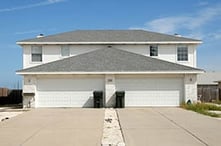
Other parts of the country have overtaken Auckland as growth engines of the housing market, the latest real estate industry figures show.
New record median prices were set in Waikato/Bay of Plenty, Hawke's Bay, Wellington, Nelson/Marlborough and Otago as the market strengthened in December, according to the Real Estate Institute of New Zealand (REINZ).
As usual, house sales dipped ahead of Christmas, falling 9 per cent on the previous month, although it was up 3.5 per cent a year earlier.
Prices did not pause for breath, however, with the national median house price climbing to $465,000, up 1.2 per cent on the previous month and.3.3 per cent on the previous year.
Excluding Auckland, house prices hit a record $379,000, up 8 per cent on a year ago.
Pricey houses were particularly in demand, with sales in the $1 million-plus category rising 20 per cent over the year.
Real Estate Institute chief executive Colleen Milne said sales outside Auckland were clearly picking up, rising 17.5 per cent on the previous December, and the spillover effect from Auckland did not explain it all.
"Regional markets, particularly Northland, Waikato/Bay of Plenty, Hawkes Bay and Central Otago Lakes are now setting the pace for the New Zealand real estate market, with Auckland, in a relative sense, now in the middle of the pack," Milne said.
She thought the decline in sales in Auckland would be "transitory" as investors got to grips with the new rules, but other regions had stolen the show with "noticeable" price increase, big drops in inventory and days to sell.
"This breadth of the improvement across New Zealand suggests that there is more is at play than just an Auckland 'halo effect', although that has contributed in the northern regions."
Kim Mundy, an economist with ASB, said the housing market was certainly healthy, particularly given the fall in days to sell. But she also did not count the Auckland market out.
On a seasonally adjusted basis, Auckland sales had picked up.
It was "too soon to say" whether the pick-up would be sustained, however.
Northland was the strongest real estate market in the country, with sales were up 39 per cent and prices up 20 per cent on a year ago.
Agents reported a surge in demand for coastal properties, and houses on the market had dropped "significantly," Milne said.
Waikato/Bay of Plenty was the next busiest region in December, with sales up 30 per cent on a year ago and prices up 11 per cent.
Gisborne, Rotorua and Taupo were all particularly active, and there were signs that first-home buyers were now striking competition, according to REINZ regional director, Philip Searle.
"Aucklanders continue to feature strongly across the region, particularly in Hamilton and Tauranga," he said.
In Hawkes Bay prices were up 13.3 per cent, hitting a new median high, and sales were up 26.3 per cent, as demand rose across the price range.
Both the Taranaki and Manawatu markets saw large lifts in sales, but prices were more moderate, up 1.1 and 4.3 per cent respectively.
In Wellington, sales rose 18.4 per cent, a welcome sign that the Capital's flat market was coming back to life. Prices were up 5.1 per cent, hitting a new high of $436,000.
REINZ's Wellington director Euon Murrell said that although sales dipped in December, the market was still strong and there was "plenty of activity from all buyers groups".
After a strong few years, Canterbury/Westland prices were up a respectable 5.3 per cent for the year but prices were flat, as first-time buyers held out for a better deal in the New Year.
But further south, the housing market was chugging along nicely.
Central Otago Lakes had the highest annual increase in the country, with prices up 20.4 per cent, while Southland's prices rose 13.9 per cent and Otago's rose 11.7 per cent.
Sales in all three regions were strong, particularly with first-time buyers in Otago, and a shortage of listings in Central Otago. Most of the sales growth in Central Otago was coming from other parts of the region not Queenstown, Milne added.
.png)




.png?width=200&height=100&name=RE%20Investar-Logo-MRI_Colour%20web%20229x115px%20(1).png)